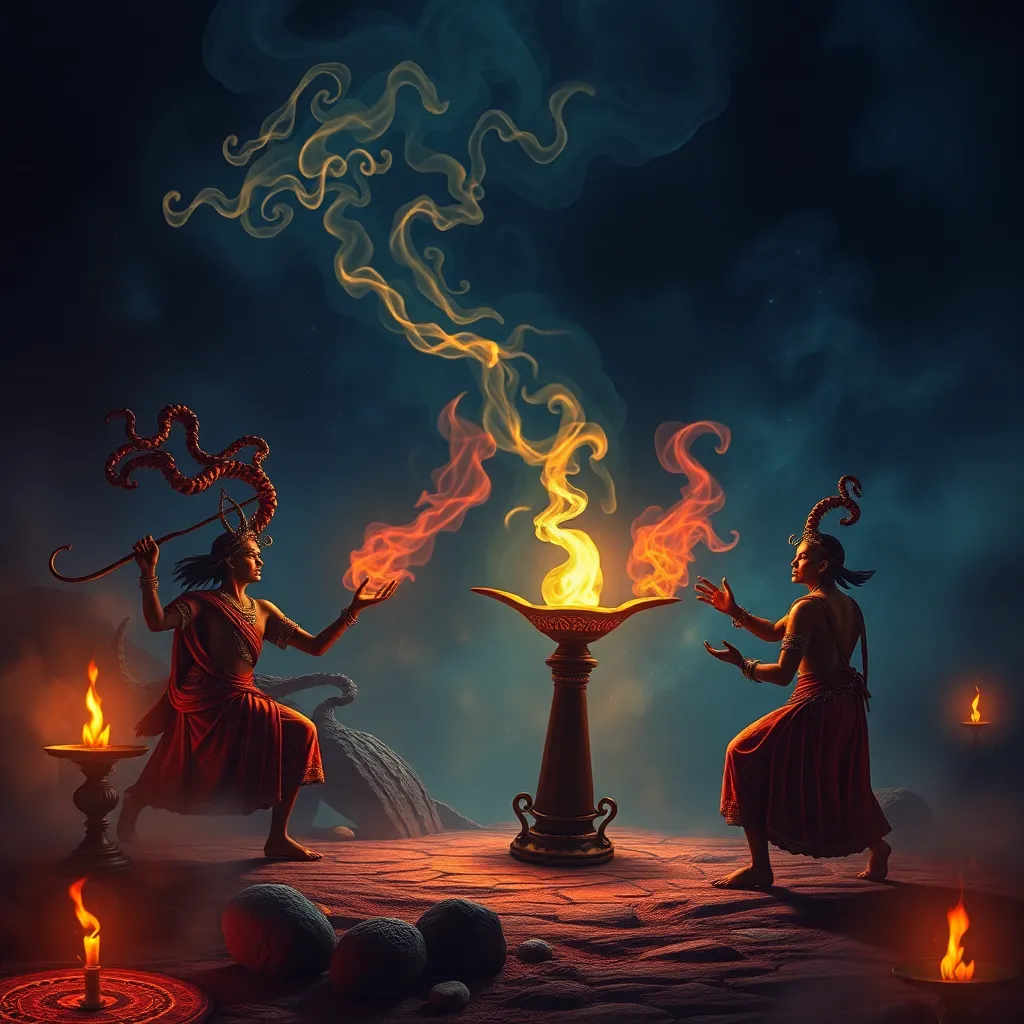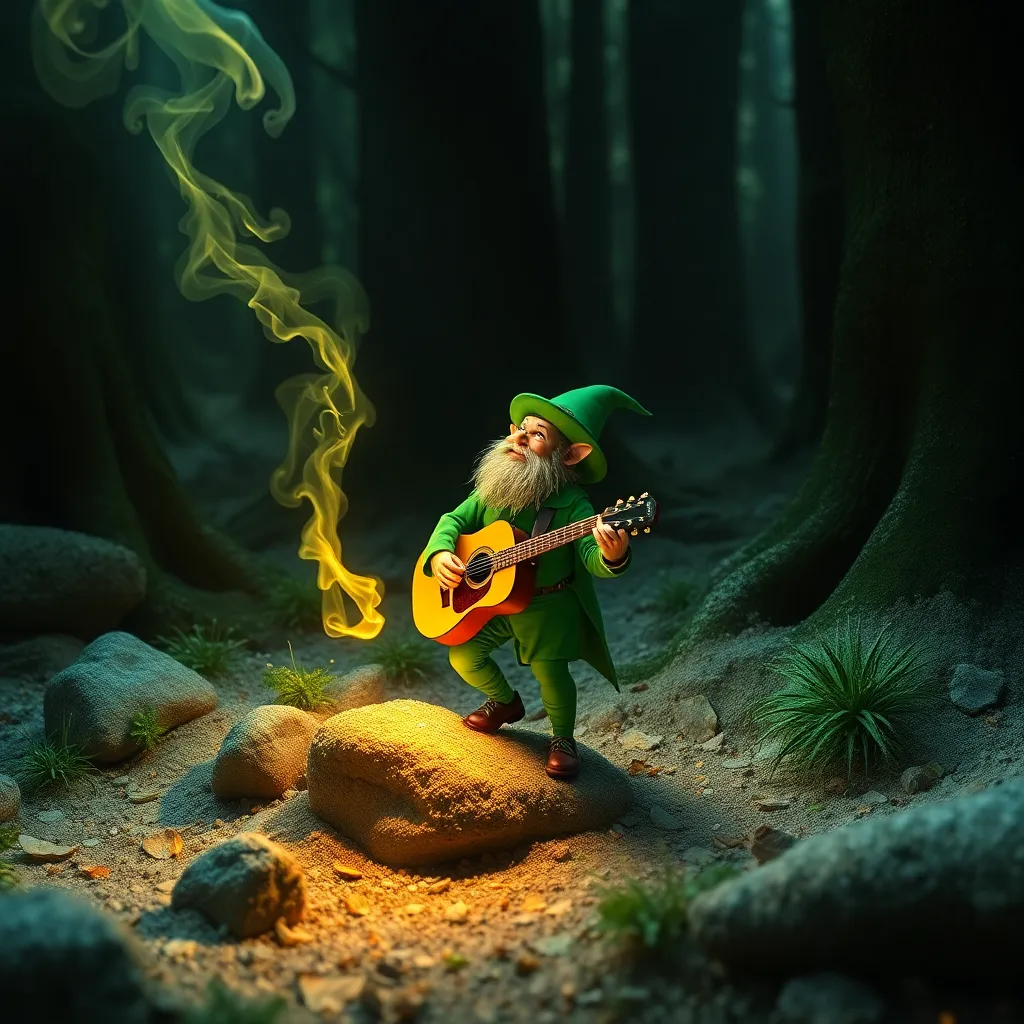The Djinns of the Lamp: Ifrit in Arabian Nights and Other Folktales
I. Introduction to Djinns: Origins and Cultural Significance
Djinn, often referred to as genies in popular culture, are supernatural beings that have captivated the imagination for centuries. Originating from Arabian folklore, their stories weave through various cultures, each adding its own nuances and interpretations.
A. Definition of Djinn
Djinn are described in Islamic theology as beings created from smokeless fire, distinct from humans and angels. They are endowed with free will, allowing them to choose between good and evil, much like humans.
B. Historical and cultural roots in Arabian mythology
The concept of Djinn dates back to ancient Arabian folklore, where they were believed to inhabit desolate places, caves, and ruins. The pre-Islamic Arabs often viewed Djinn as spirits that could influence natural events, embodying both benevolence and malevolence.
C. The role of Djinn in Islamic beliefs
In Islamic teachings, Djinn are acknowledged in the Quran, where they are considered a separate creation of God. They possess their own communities and engage in various activities, with some embracing Islam while others rebel against it.
II. Ifrit: The Fiery Djinn
Ifrit is one of the most notable types of Djinn, often depicted as powerful and cunning beings associated with fire.
A. Description and characteristics of Ifrit
Ifrits are characterized by their immense strength, intelligence, and fiery nature. They are traditionally portrayed as large, fearsome entities capable of shape-shifting, often taking on monstrous forms.
B. Differences between Ifrit and other types of Djinn
- Types of Djinn: Djinn can be categorized into various types, such as Marid, who are known for their strength and rebellious nature, and Qareen, who serve as a personal spirit companion.
- Ifrit’s Characteristics: Unlike Marid, Ifrits are often depicted as more malevolent and are associated with fire and destruction.
C. Symbolism of fire and power in Ifrit’s portrayal
The symbolism of fire in Ifrit’s portrayal represents both creation and destruction. Fire, being a source of warmth and light, also embodies danger and chaos, reflecting the duality of Ifrit’s character.
III. The Role of Ifrit in Arabian Nights
The tales of “One Thousand and One Nights,” also known as Arabian Nights, are filled with enchanting stories that feature Djinn, particularly Ifrit.
A. Overview of “One Thousand and One Nights”
This collection of Middle Eastern and South Asian folktales showcases a rich tapestry of narratives, many of which involve magical elements, including Djinn, which serve as pivotal characters in various plots.
B. Key stories featuring Ifrit, including The Fisherman and the Ifrit
One of the most famous stories is The Fisherman and the Ifrit. In this tale, a fisherman discovers a trapped Ifrit in a lamp. The Ifrit initially threatens to kill the fisherman, but through cleverness and negotiation, the fisherman manages to outwit the Ifrit.
C. Themes of power, control, and moral lessons
This tale, along with others, explores themes of power dynamics between humans and supernatural beings. It emphasizes the importance of wisdom, humility, and the consequences of greed.
IV. Ifrit in Other Folktales and Cultures
Ifrit’s influence extends beyond Arabian culture, appearing in various forms across different traditions.
A. Comparison of Ifrit with similar figures in other cultures (e.g., Persian, Indian)
- Persian Mythology: In Persian tales, Ifrits are often depicted similarly, embodying both benevolence and malice, with a focus on their fiery nature.
- Indian Folklore: In Indian stories, figures like the Pishacha share similarities with Ifrit, representing malevolent spirits that feed off human energy.
B. The evolution of Ifrit’s portrayal in modern storytelling
In contemporary narratives, Ifrit has evolved from a malevolent figure to a more nuanced character, sometimes portrayed as a misunderstood entity seeking redemption.
C. Cross-cultural influences and adaptations
The tales of Ifrit and Djinn have influenced literature and media globally, resulting in adaptations that reflect local cultures while retaining core elements of the original folklore.
V. The Symbolism of the Lamp and Its Connection to Ifrit
The lamp is a central symbol in many Djinn stories, particularly those involving Ifrit.
A. The significance of the lamp in folklore
The lamp represents a vessel for power and mystery. It is often seen as a source of both fortune and peril, depending on how it is treated by its possessor.
B. The relationship between the lamp and the summoning of Ifrit
In many tales, the lamp serves as a means to summon the Ifrit, highlighting themes of control and the consequences of human desires. The act of rubbing the lamp often leads to dramatic changes in the protagonist’s fortunes.
C. Interpretations of the lamp as a metaphor for human desires and consequences
The lamp can be interpreted as a metaphor for human ambition, symbolizing the potential for both great rewards and dire consequences. It serves as a reminder of the complexities of desire and the ethical dilemmas that arise from it.
VI. Ifrit in Contemporary Media
Ifrit has made significant appearances in modern films, literature, and video games, showcasing the character’s versatility.
A. Representation of Ifrit in film, literature, and video games
- Film: Movies often depict Ifrit as a fearsome antagonist or a powerful ally, reflecting the dual nature of these beings.
- Literature: Ifrit appears in various fantasy novels, often as a character that embodies conflict between good and evil.
- Video Games: In video games, Ifrit is frequently portrayed as a summon or a boss character, emphasizing its power and fiery nature.
B. How modern interpretations differ from traditional narratives
Modern interpretations tend to humanize Ifrit, exploring their background and motivations rather than portraying them solely as antagonistic figures.
C. The impact of these representations on cultural perceptions of Djinn
These adaptations have reshaped public perceptions of Djinn, transforming them from mere mythical beings into complex characters that resonate with contemporary audiences.
VII. The Legacy of Ifrit in Modern Culture
Ifrit’s legacy persists in modern culture, influencing various storytelling forms and the fantasy genre.
A. Ifrit’s influence on fantasy genres and storytelling
Ifrit has inspired countless writers and creators, establishing a template for the portrayal of supernatural beings in fantasy literature and media.
B. The ongoing fascination with Djinn in popular culture
The fascination with Djinn continues, as they represent the allure of the unknown and the possibility of transformation, making them relevant in contemporary narratives.
C. The role of Ifrit in contemporary discussions of mythology
Ifrit serves as a focal point in discussions about mythology, identity, and the human experience, reflecting societal values and fears through its stories.
VIII. Conclusion: The Enduring Mystique of Ifrit
Ifrit remains a significant figure in folklore, embodying the complexities of human desires and the consequences of seeking power.
A. Summary of Ifrit’s significance in folklore
Ifrit’s portrayal in stories highlights themes of control, morality, and the interplay between human ambition and supernatural forces.
B. Reflections on the importance of preserving cultural narratives
Preserving these narratives is essential for understanding cultural identities and the lessons they impart, ensuring that the stories of Ifrit and other Djinn continue to resonate through generations.
C. Final thoughts on the future of Djinn in storytelling and culture
The future of Djinn in storytelling promises continued exploration and adaptation, as creators draw from rich traditions to craft new narratives that reflect contemporary values and questions.
</html




